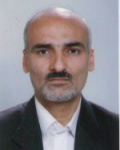| Authors | حسین خراسانی زاده,کسرا محمدی,نوید گودرزی |
|---|
| Journal | INT J HYDROGEN ENERG |
|---|
| Page number | 21888 |
|---|
| Volume number | 41 |
|---|
| IF | 3.205 |
|---|
| Paper Type | Full Paper |
|---|
| Published At | 2016-12-11 |
|---|
| Journal Grade | Scientific - research |
|---|
| Journal Type | Electronic |
|---|
| Journal Country | Iran, Islamic Republic Of |
|---|
| Journal Index | ISI ,SCOPUS |
|---|
Abstract
Diffuse solar radiation is an important factor for design and simulation processes of the
photovoltaic (PV) panels as well as other solar systems. Nowadays, hydrogen generation can
be accomplished by harnessing solar energy via PV systems to electrolyze the water in a clean
and environmentally friendly manner. In this study, 13 existing functional forms of the
clearness index based diffuse radiation models, reported so far in the literature, have been
firstly categorized on the basis of how they correlate: (1) the diffuse fraction and (2) diffuse
coefficient with clearness index as the sole input variable. Then in a case study, by utilizing the
long term global and diffuse solar data, in overall 26 new models have been established for
both daily and monthlymean daily predictions for the city of Kerman, Iran. The performances
of the new established models have been evaluated using different well-known statistical
indicators. For the daily based prediction, the diffuse fraction model with linear form is the
most suitable one with root mean square error (RMSE) and correlation coefficient (R) of
1.3081 MJ/m2 and 0.8767, while for the monthly mean daily prediction, the diffuse coefficient
model again with linear form provides the utmost accuracy, for which RMSE and R are
0.5391 MJ/m2 and 0.9258, respectively. The employment of these only clearness index based
models for any solar system application, in particular solar hydrogen production, is convenient;
given that the knowledge of clearness index only requires the global solar radiation data.
